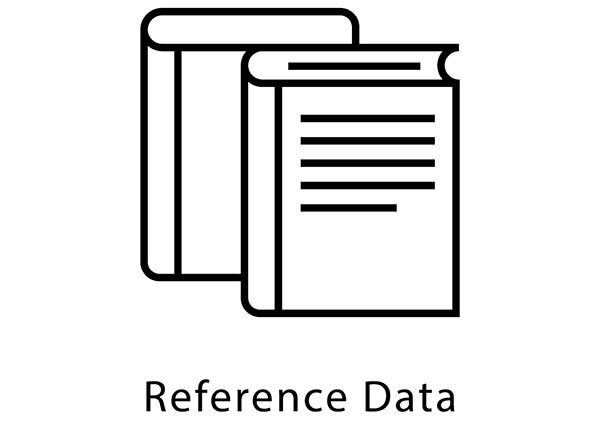Reference data (a.k.a. as master data, or golden copy, or single source of truth [SSOT] ) describes the set of data an organization needs for daily operations. According to the DAMA-DMBoK2, reference data characterizes or classifies or relates to other data or information external to the organization. It describes the core entities of the business or enterprise, including customers, prospects, citizens, suppliers, sites, hierarchies, and charts of account. Reference data covers a range of values (e.g. 50 states) where master data is more specific (e.g. Matt Damon’s state of residence is New York). Both provide context for the transaction data and tend to be interchanged.
Reference data is fundamental in Master Data Management as operational software looks up and uses the values in, typically, a reference data table. This makes reference data the “Rosetta Stone” for enterprise and departmental applications to understand and work with one another.
Meanings depend on the business
context and the set of Master Data is designed to work as an ontology,
standardizing the behaviors and relationships between different data entities
across a business.
Other
Definitions of Reference Data Include:
- “Describes subjects related to the ‘who,’ ‘what,’ and ‘where’ in business transactions communications, and events.” (Amber Lee Dennis)
- “Unchanging tags comprising an individual or entity (e.g. name and address).” (Michelle Knight)
- “Defines a set of permissible values to be used by other data fields, particularly in cases where values are widely reused.” (University of Rochester)
- “A categorization system to make sure data entities remain consistent. Reference data typically lives in a reference table that software can access. Ideally this allows for seamless Master Data Management.” (Forbes)
Reference
Data Examples Include:
- Billing information captured to automate invoice processing
- A table describing the key entities in retail transaction data
- Clean manufacturing and distribution data used to simplify customer’s transactions
- The regulation of pharmaceutical by the U.S. Food and Drug Administration
Businesses Need Reference Data to:
- Keep a “book” record as to the data being used by the business
- Identify components needed for day-to-day operations
- Provide consistency in identifying critical elements and supporting quick decisions
- Comply with regulations
- Ensure Data Quality
- Manage risk
Image used
under license from Shutterstock.com
